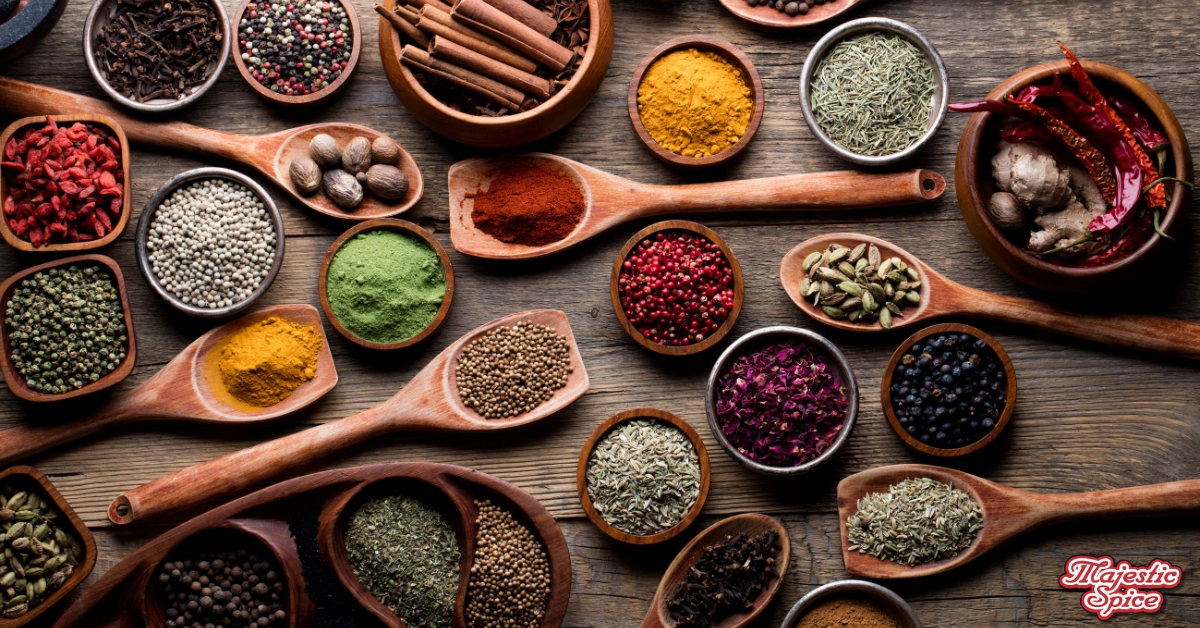[vc_row][vc_column][vc_column_text]Summer is at the door and many people find themselves eager to explore new destinations and immerse themselves in different cultures. Among many different types of travel experiences available, culinary tourism stands out as a particularly enriching journey. This form of tourism goes beyond simply tasting different dishes; it goes deep into the heart of a culture’s culinary traditions and the spices that make them special.
The Role of Spices in Culinary Tourism
Spices have been valued for centuries, not only for their ability to enhance flavors but also for their cultural and historical importance. Today, spice farms and markets have become popular attractions for culinary tourists seeking authentic and engaging experiences. These locations offer a unique glimpse into the farming practices, historical backgrounds, and culinary traditions of different regions.
Spice Farms: A Glimpse into the Source
Visiting a spice farm is both educational and sensory. These farms, often located in scenic areas, provide tourists with the chance to see how spices are grown, harvested, and processed. For instance, in places like India and Zanzibar, visitors can tour pepper, vanilla, and clove plantations, learning about the entire journey from plant to spice jar. These tours often include demonstrations of traditional farming techniques, opportunities to pick spices, and tastings that highlight the distinct flavors and aromas of fresh spices.
Spice Markets: A Feast for the Senses
Spice markets are another essential stop for culinary tourists. These bustling markets, filled with vibrant colors and rich aromas, offer an immersive experience. Visitors can stroll through aisles packed with spices from around the world, engage with knowledgeable vendors, and discover rare and unique spices. Markets in places like Morocco, Turkey, and Thailand are renowned for their extensive variety and vibrant atmosphere. The chance to purchase fresh, high-quality spices directly from the source is a highlight for many travelers.
Exploring Mexico Through Spices
For those in the USA, Mexico offers an exciting and close-to-home destination to explore the world of spices. Mexican cuisine is rich in flavors, with spices playing a key role in its distinctive taste. Visitors can explore markets like Mercado de la Merced in Mexico City, where stalls overflow with vibrant chilies, fragrant herbs, and exotic spices. In regions like Oaxaca, culinary tourists can visit local farms to learn about the cultivation of unique ingredients such as Mexican oregano and epazote. Participating in cooking classes or food tours can further deepen the understanding and appreciation of how these spices are used in traditional Mexican dishes. From mole sauces to street tacos, the spices of Mexico offer a flavorful journey that is both accessible and deeply enriching.
Culinary Workshops: Hands-On Learning
Many destinations also offer culinary workshops focused on the use of local spices. These workshops provide a hands-on experience where tourists can learn to cook traditional dishes using authentic spices. Guided by local chefs, participants gain insights into the culinary heritage of the region and the specific ways in which spices are used to create distinctive flavors. Such experiences deepen the connection between travelers and the local cuisine, making their culinary journey even more memorable.
Culinary tourism, with its focus on spices, offers a rich and immersive way to explore different cultures. As you plan your summer travels, consider learning about the culture through your stomach. [/vc_column_text][/vc_column][/vc_row]

